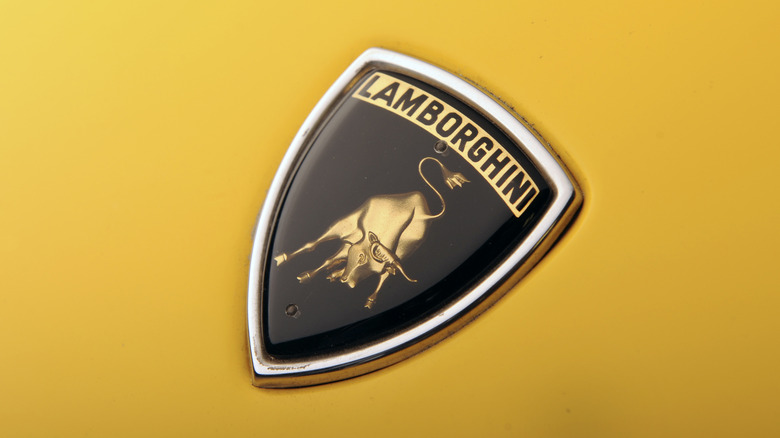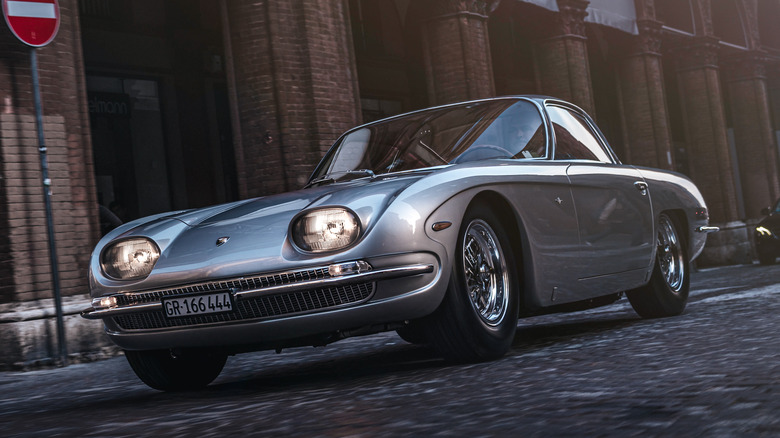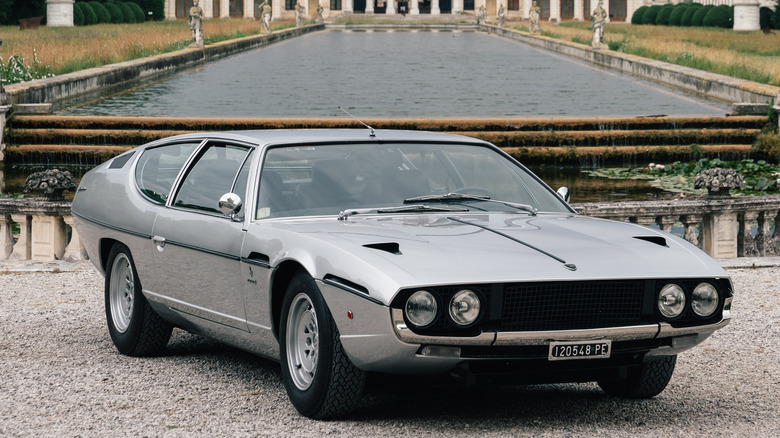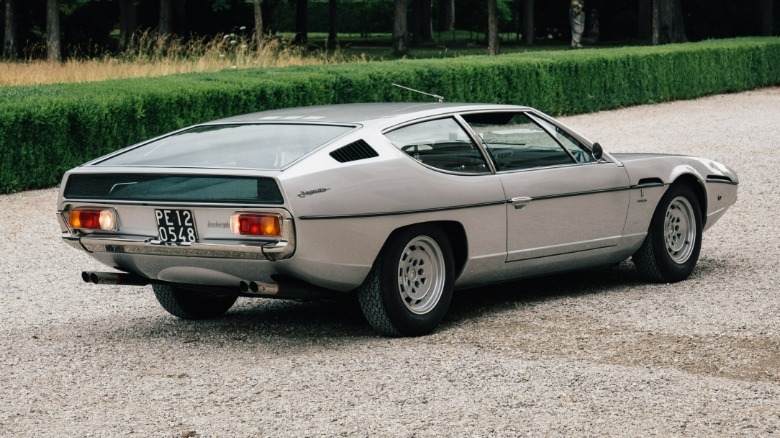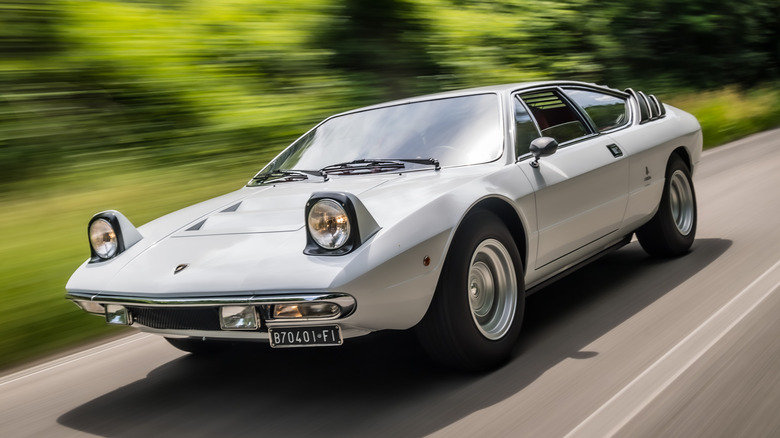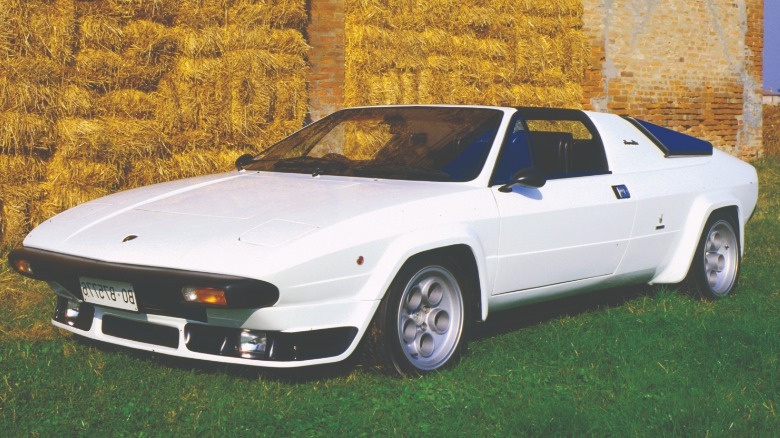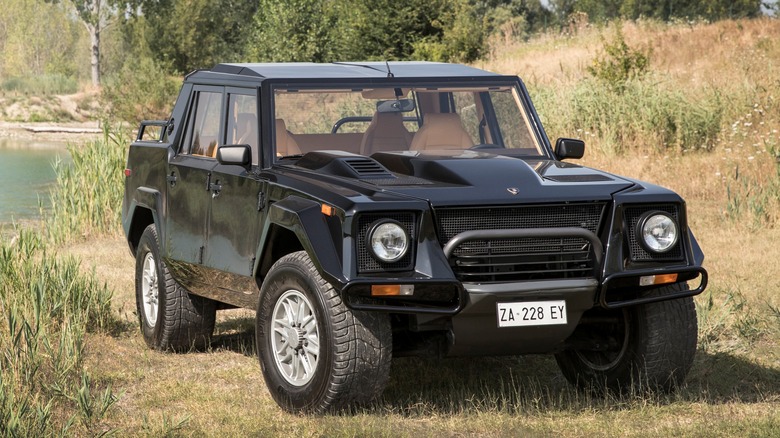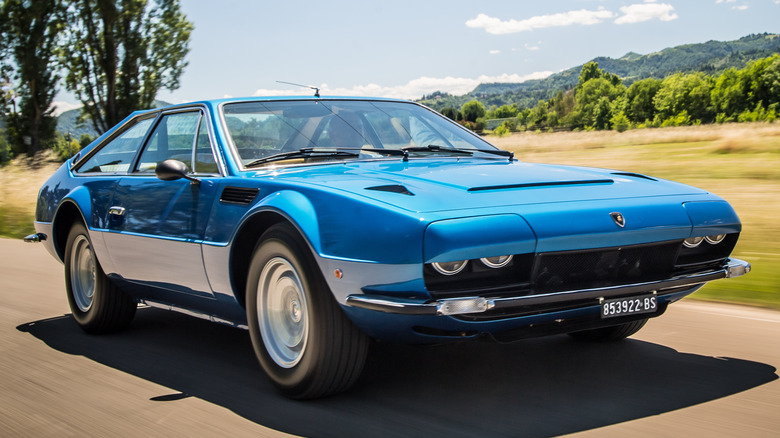5 Of The Most Underrated Lamborghinis Ever Made
Much like its arch-nemesis Ferrari, it's hard to say that any model bearing Ferruccio Lamborghini's name is "underrated." Unlike Ford, Chevy, or Toyota, which have made millions of cars and several dozen different models and nameplates, since Lamborghini was founded in 1963, around two dozen models have worn the iconic bull badge.
Every automotive fan on the planet has heard of the big Lambos like the Miura, Countach, Murcielago, Gallardo, Aventador, and Huracan, but what models in Lamborghini's storied lineup deserve a little more of the spotlight?
Even within Lamborghini's relatively short history compared to other automakers and a somewhat small stable of cars, some models didn't quite set the automotive world on fire when they left the factory. The automotive world was so stunned by cars like the Countach and the Miura that a few Lamborghinis produced around the same time didn't get the same adoring attention. But that doesn't mean these cars aren't worth at least a little bit of praise.
Lamborghini 350 GT
The first ever Lamborghini, the 350 GT, often loses out to the Miura in terms of famous early Lambos. But the 350 GT was a serious car for 1964. Only 120 were made out of the then-fledgling factory, and it featured a 3.5-liter V12 along with four-wheel disc brakes and independent suspension. Your average car in 1964 was huge, heavy, and unwieldy, the 350 GT, with its optional limited-slip differential and aluminum body components, was just the opposite.
The Miura may get the credit as the first Lamborghini ever to resemble a supercar. Still, the 350 GT started Lamborghini's tradition of using V12s in its flagship cars, which continues today. If the 350 GT didn't take off and make Ferrari and other automakers take notice, Ferruccio might have gone back to making tractors. Fortunately for supercar fans, and unfortunately for Ferrari, that wasn't the case.
Lamborghini Espada
Despite being an Italian company, Lamborghini derives much of its nomenclature and model names from Spanish bullfighting. The word "espada" means "sword" in Spanish and is the name of Lamborghini's four-seater, produced from 1968 to 1978. Although given its general shape, "pala," the Spanish word for "shovel," might be a better fit. But that doesn't mean the Espada is ugly, far from it. The front looks like an American muscle car from the era, like a Dodge Challenger or AMC Javelin, but the back looks like an avant-garde masterpiece of glass and metal.
Pair the striking profile with a big V12, a top speed of 155 miles per hour, and the fact it was Lamborghini's bestselling model in the 1970s, and you have a winner on your hands. Unfortunately for the Espada, it was produced alongside the Countach, perhaps the most recognizable wedge-shaped symbols of supercar excess to ever come from a well-known automaker.
Lamborghini Urraco
According to Lamborghini, the Urraco is a sedan, despite not having the prerequisite number of doors (four). The Urraco was wedge-shaped like every other supercar from the 1970s but in a more understated way. It was not designed to make competing Ferrari designers have night terrors or light other cars on fire with its wild styling and speed. The same couldn't be said about the Countach, however. The Urraco was made to be a comfortable grand-touring car and reach a wider audience than a car like the Countach.
Urracos still had the wedge shape indicative of Lamborghinis from the time, but it was a 2.5 or 3-liter V8-powered four-seater meant to glide around in. To adapt a quote from Obi-Wan Kenobi, it was a more elegant Lamborghini for a more civilized drive.
The Urraco later evolved into the hyper-rare Lamborghini Silhouette, which looked similar, but had a bit more power from its mid-mounted V8 and featured a removable Targa roof. Only 53 Silhouettes were ever made.
Lamborghini LM002
First coming to dealerships in 1986, The Lamborghini LM002 is one part luxury SUV and one (much larger) part military vehicle. It's one of the only Lamborghinis around to which you could feasibly mount a smoke grenade launcher. In Lamborghini's official description of the LM002, the company says, "in this model, aerodynamics and lightweight principles were put aside to build a real off-road giant," which aptly describes the LM002's design. It looks like an angry piece of masonry and is powered by an even angrier V12.
Despite possessing all the heft of a city block, the LM002 can hurl itself to 60 miles per hour in 7.2 seconds. Today's comparatively tame Urus SUV may be faster and more technologically advanced, but you likely couldn't stage a coup or plow through a barricade while driving one. The same can't be said about the LM002. Plus, it was available with air conditioning and leather seats, a nice bonus.
Lamborghini Jarama
The Jarama does not look like a lot of other Lamborghinis, but that's not a bad thing. It's not a space-age wedge with a huge wing. The greenhouse is different, but not radically so from other luxury coupes from the era, and its V12 engine is mounted in the front, unlike every Lamborghini that came after it.
But despite the understated nature of the car and not particularly exciting exterior, the Jarama was a favorite of Ferruccio himself. When the car was first produced in 1970, Ferruccio's time at the company was winding down, and he would leave Lamborghini two years later.
With its comfortable interior and competent powerplant, you can't blame Ferruccio, a man approaching retirement, for liking the Jarama. According to Lamborghini, the Jarama was "a supercar with a gentle soul." That gentleness is only betrayed by the GT models having a top speed of 161 miles per hour.
